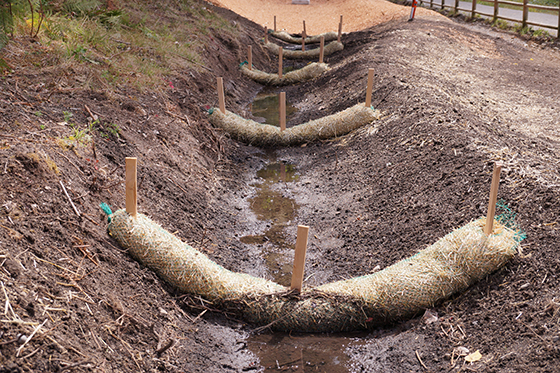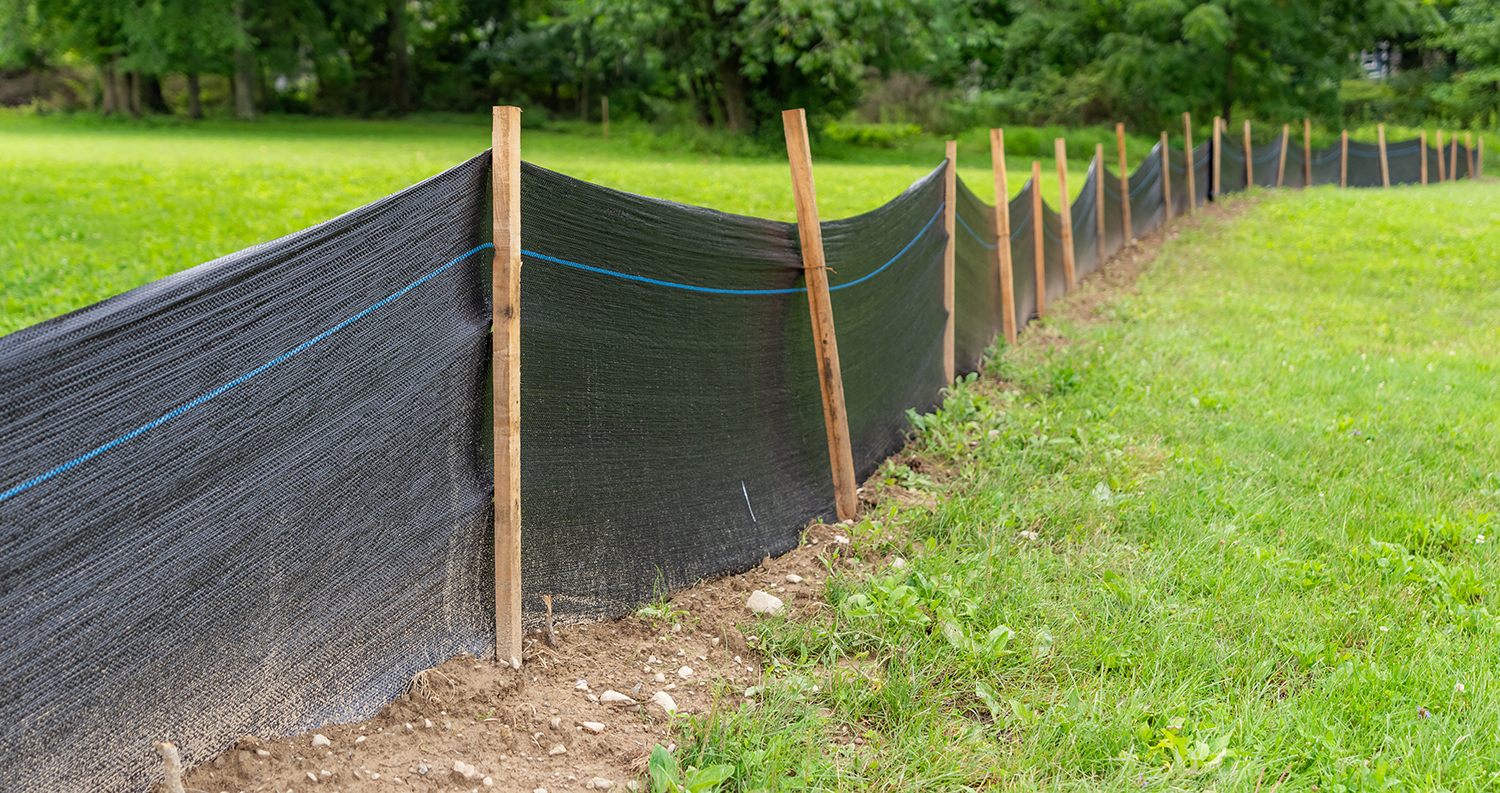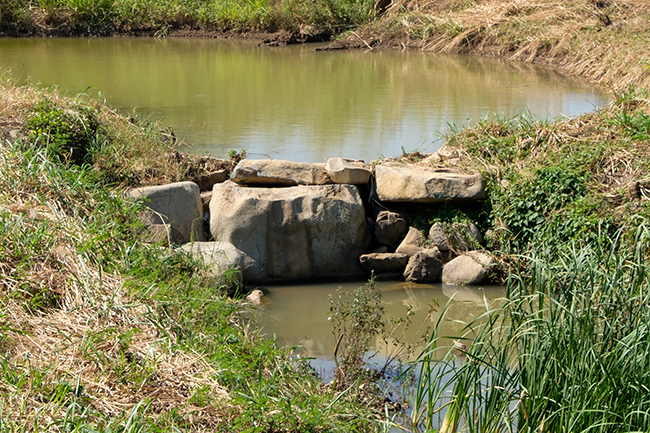Sediment Control
Table of Contents
IRVM programs will be responsible for containing eroded soil on the project site. Basic sediment control products likely to be used on county rights-of-way are described below.
Wattles, Sediment Logs, and Filter Socks

Wattles and sediment logs are tubes of straw, coir, or wood fibers encased in burlap or degradable plastic netting and anchored in the ground by wooden stakes. Both filter sediment and slow down water flow. Wattles and logs containing densely packed material—especially straw—are good as slope interrupters. Wood fiber logs are more porous and less likely to float, making them better suited for ditch checks. Both are good for perimeter applications and inlet protection.
Filter socks are degradable tubes filled with compost. They are generally used for perimeter control or at intervals along a slope to capture sheet flow. Polyacrylamide (PAM) may be added to the compost to enhance sediment control. PAM captures clay particles, creating cleaner runoff.
Wattles, sediment logs, and filter socks are usually easy to install and can be put on bare soil or over erosion control blankets.
Silt Fence

Silt fences are geotextile barriers trenched into the ground and supported by posts. They are useful on perimeters and in channels with relatively low flow. As runoff passes through the fabric, silt fences filter out small amounts of sediment. They must be kept clean to function properly and are removed after final stabilization. Silt fences are easy to install and relatively inexpensive.
Silt fences are ineffective in high-volume flow areas and should not be used as check dams, which would be ineffective and can cause more erosion.
Improper installation of silt fences, which is common, renders them ineffective. For proper installation techniques, follow up-to-date specifications.
Check Dams

Check dams should be constructed across the water flow using clean rocks, permeable plastic berms, or similar products. Unlike silt fences, check dams do not cause water to dam up. Instead, they let water pass through, slowing its velocity and dissipating its energy.
Sedimentation can occur on the upstream side of check dams. If sedimentation becomes too heavy, check dams will turn into waterfalls and may be rendered ineffective. Monitor check dams and excavate the upstream side if necessary.
Plastic berms should not be placed in areas where they would be susceptible to filling with debris (e.g., corn stubble from a field waterway). One heavy rain can cause these berms to fill, causing the water to dam up.
Improper design of check dams, which is not uncommon, renders them ineffective. Follow current design specifications and account for the individual characteristics of each site.
Roadside Real Talk
Insights from Roadside Managers and Other Professionals
If a rain event is relatively small, silt fences will function properly as a check dam. But, small rain events typically cause little to no erosion. Silt fences may be good for PR, but they create a point of failure for the project. A roadside is essentially a headwater stream. Stream dynamics show that flow equals the area times the velocity. When the water from a flat, six-foot wide channel is concentrated into a width of typically less than a foot at the low point of a silt fence, the water’s velocity increases substantially, thus erosion is caused instead of prevented.
—Jim Uthe and James Devig, Dallas County, 2024
Rock check dams should mostly be below ground. The waterfall problems can be eliminated if the check doesn’t extend above ground level.
—Wes Gibbs, Jones County, 2024


